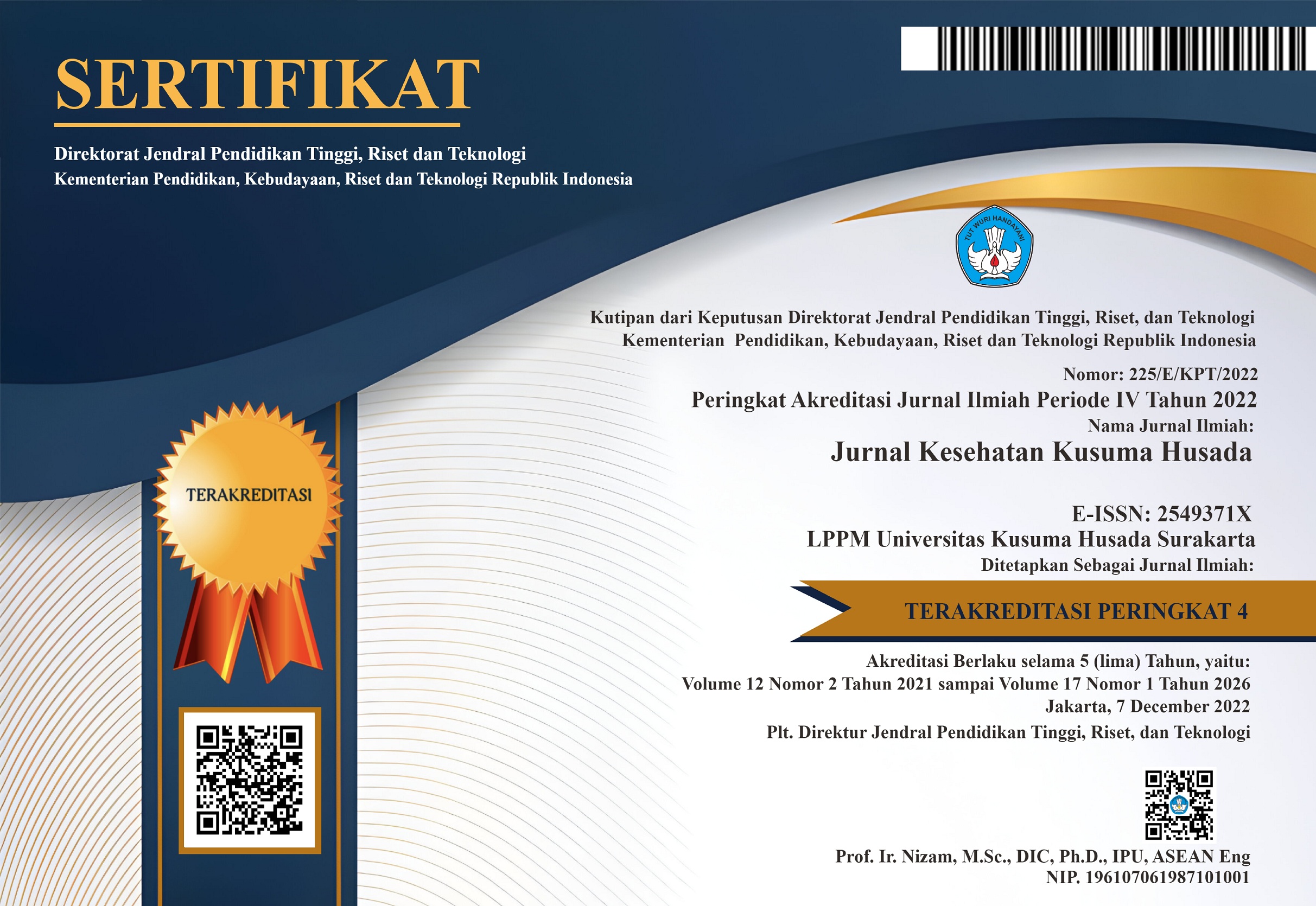TES JALAN 6 MENIT UNTUK MENGUKUR KEBUGARAN JASMANI, NADI ISTIRAHAT, DAN NADI EXERCISE PADA MAHASISWA ANESTESIOLOGI PEROKOK DAN NON PEROKOK
DOI:
https://doi.org/10.34035/jk.v14i1.974Keywords:
6 Minute Walking Test, Physical Fitness, Resting Heart Rate, Exercise Heart Rate, Tes Jalan 6 Menit, Kebugaran Jasmani, Nadi Istirahat, Nadi ExerciseAbstract
Merokok merupakan perilaku yang dapat membahayakan dan berisiko buruk pada kesehatan apabila di konsumsi pada usia remaja. Merokok juga menyebabkan nadi exercise pada saat latihan menjadi tidak normal. Tes jalan kaki 6-menit juga merupakan tes praktis untuk memperkirakan kebugaran kardiorespirasi. Tujuan penelitian ini adalah untuk mengetahui kebugaran jasmani, nadi istirahat dan nadi exercise dengan Tes Jalan 6 Menit. Metode yang digunakan yaitu quasi experiment dengan jumlah sampel 60 responden mahasiswa yang terbagi menjadi dua kelompok yaitu kelompok perokok dan non perokok. Hasil penelitian menunjukkan rerata nadi istirahat pada kelompok perokok yaitu 95.80±10.89 dan nadi exercise yaitu 101.83±16.58, sedangkan pada kelompok non perokok untuk nadi istirahat yaitu 95.06±13.29 dan nadi exercise 98.46±15.74. Hasil rerata jarak tempuh pada kelompok perokok 355.16±24.30 dan kelompok non perokok 377.13±49.06. Kesimpulan menunjukkan tidak terdapat perbedaan signifikan antara kelompok perokok dan non perokok baik nadi istirahat maupun nadi exercise dengan nilai p value 0.816 dan 0.423 (p<0,05).
Smoking is a behavior that can be harmful and has a bad risk to health if consumed at a young age. Smoking also causes the exercise pulse to become abnormal during exercise. The 6-minute walking test is also a practical test for estimating cardiorespiratory fitness. The purpose of this study was to determine physical fitness, resting pulse and exercise pulse with the 6-Minute Walk Test. The method used was a quasi-experimental with a sample of 60 student respondents who were divided into two groups: smokers and non-smokers. The results showed that the mean resting heart rate in the smoking group was 95.80 ± 10.89 and the exercise heart rate was 101.83 ± 16.58, while in the non-smokers group the resting heart rate was 95.06 ± 13.29 and the exercise heart rate was 98.46 ± 15.74. The mean distance traveled in the smoking group was 355.16 ± 24.30 and the non-smokers group was 377.13 ± 49.06. The conclusion showed that there was no significant difference between the smoking and non-smoker groups in both resting and exercise heart rate with p values of 0.816 and 0.423 (p<0.05).
Downloads
Published
Issue
Section
License
The copyright of the published articles belongs to Jurnal Kesehatan Kusuma Husada.

This work is licensed under a Creative Commons Attribution 4.0 International License.
















